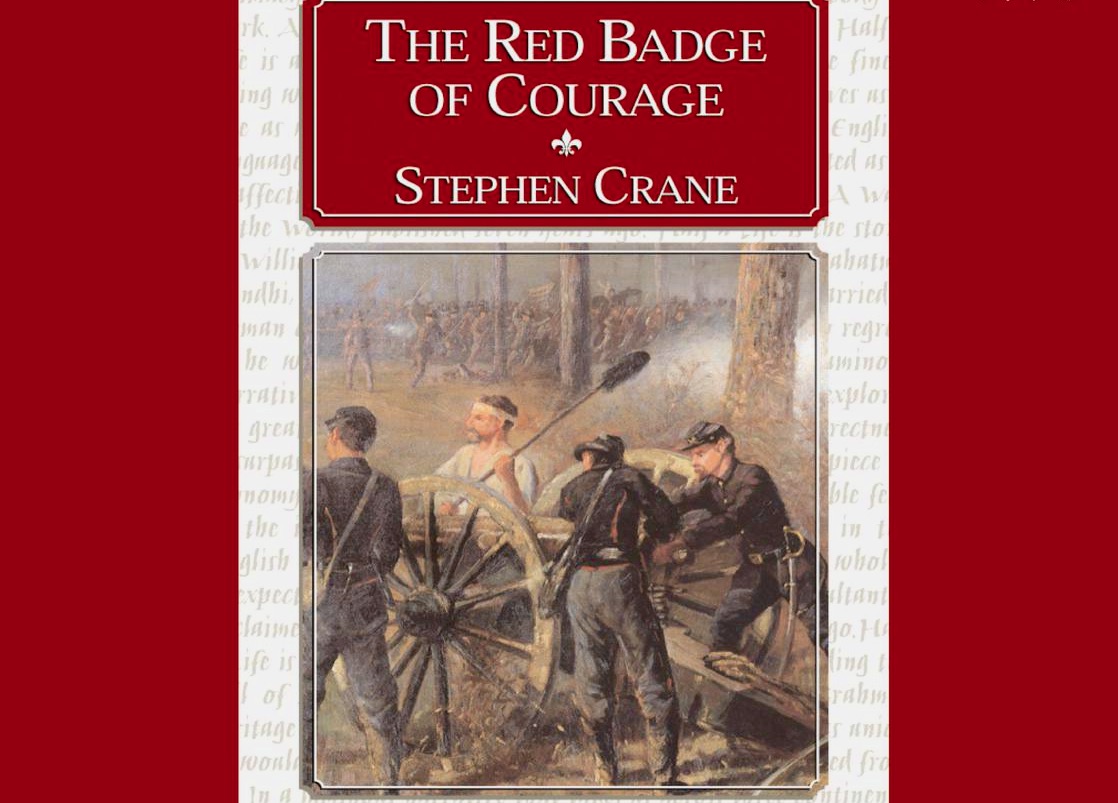http://economiacircularverde.com/que-es-la-economia-circular/ Stephen Crane is in some ways the John Keats of American literature: He wrote a recognized classic that made his international reputation at the age of 24, only to die, like Keats, of tuberculosis at a young age (he was only 28), cheating the world of that promise of later literary milestones. But Crane was far more famous than Keats in his lifetime, both for The Red Badge of Courage which was a bestseller in the U.S. and a sensation in England, and for his scandalous personal life, which involved liaisons with several women of perhaps questionable morals—so in some ways he was also the Lord Byron of American Lit.
But Crane died in poverty, not unlike the youthful poet, for though he worked constantly, both as a war correspondent and the author of a continual outpouring of short fiction, Crane was never able to make enough to pay off his creditors. And his reputation slipped among the general public shortly after his death in 1900. When it was revived in the 1920s, due in part to the admiration of people like H.G. Wells, Joseph Conrad, and Henry James, who were his friends and admirers, and new admirers like Ernest Hemingway, who was inspired by his fiction, it was revived for good, and Crane is now seen as one of the most innovative and original writers in the naturalist and realist schools of American fiction.
I expect no objections to my including The Red Badge of Courage as number 23 (alphabetically) on my list of the “100 Most Lovable Novels in the English Language.” I’m not alone in my high ranking of Crane’s book: Red Badge is on the College Board’s list of “101 Great Books Recommended for College Bound Readers. It ranked as number 72 on the web site Shortform’s list of “100 Best War Novels in World Literature,” and as number 58 on the Facts on File publication “The Novel 100: A Ranking of the Greatest Novels of All Time.” It came in as number 56 on the 2024 “The Compete 500” list published by OCLC, a global library organization that rankd its books based on how many libraries have a copy of the book on their shelves. It came in as number 30 on The Guardian’s list of the 100 greatest English language novels. novels, and on The American Scholar’s list of “One Hundred Best American Novels 1770 to 1985,” The Red Badge of Courage was ranked number 1.
As is well known, the book is a fictionalized account of the experiences of one young private, Henry Fleming, facing his first combat experience during the American Civil War. Henry, his imagination fired by romantic notions of glory and heroism, finds actual battle terrifying and flees from his first battle. Crane, born six years after the cessation of hostilities in the war between the states, was fascinated by the war, and was inspired by accounts of famous battles and officers published in the pages of Century Magazine. What struck Crane most about those stories was that they tended to simply describe the events and the soldiers’ actions in a completely objective style. “I wonder that some of those fellows don’t tell how they felt in those scraps,” he is quoted as saying. “They spout enough of what they did, but they’re as emotionless as rocks.” And Crane resolved to write his own war novel, in which he intended, as he said, to depict the “psychological portrayal of fear”: the thoughts and feelings of an average soldier, one actually involved in the fighting for the first time. In doing so, Crane created a text that served as a model and inspiration for such succeeding works as Hemingway’s Farewell to Arms, Mailer’s The Naked and the Dead, Heller’s Catch-22, and a host of others. War stories had been told for millenia prior to Red Badge, going all the way back to The Iliad, but it wasn’t until Crane came along that people realized that the real human interest of those stories lay, for example, in Hector’s very human flight from the onslaught of Achilles, and what must have been going on in his head.
Crane was so convincing in his exploration of Henry’s psyche, and in his detailed recreation of the battle scenes in the novel, that readers in 1895 were astonished to find that the book’s 24-year old author was not in fact a veteran of the war—had never taken part in any battle at all—but had recreated the feeling and setting of the war so vividly purely on the testimony of veterans he had interviewed and stories he had read. Still, Crane gives no name to the battles in which Henry takes part, nor to most of the characters he meets or places that he goes. Henry himself, the central consciousness of the third-person narration, is always called “the Youth” by the narrator. We know his name only because other people call him by it, just as we know he names of the characters the narrator calls “the Tall Soldier” and “the Loud Soldier” because Henry and others mention them. The effect is to give an overall universality to the events of the novel—to imply that most young men through history have felt similar highs and lows, similar excitement and terrors, on the field of battle. Warfare is universal, and Henry could be storming the beach at Normandy or facing English archers at Agincourt, and display the same psychology of fear.
Still, of course, the details of the novel put the reader into a Civil War battle. Most scholars have determined, from what details Crane includes of the battle, that it is Chancellorsville (April 30-May 6, 1863), a major victory for the confederate army under Robert E. Lee. In Crane’s novel, however, the Union side is victorious, or seems to be—though that hardly seems possible to the eyes of teenaged private Fleming, of the (fictional) 304th New York Infantry Regiment. As the novel begins, Henry is wondering as he awaits the battle with his regiment ranged along a river whether he will maintain his courage in the face of the enemy attack. He conceives of war as a kind of monster that turns men into beasts:
They were going to look at war, the red animal—war, the blood-swollen god. And they were deeply engrossed in this march.
This image of the bestiality of war continues throughout the novel. Henry’s friend Jim Conklin allows that he might very well flee the battle if the rest of his company also fled. When the first skirmish begins, Confederate troops assault the Union position but are driven back. But when the enemy reforms and makes another attack, Henry sees some of his fellows run, and he flees himself, believing the battle is lost. When he reaches the rear of the Union army. however, he hears that the regiment he deserted has been victorious.
Henry is mortified at his cowardice in the face of the enemy, and we follow his thoughts as he attempts to rationalize his flight, and we follow him in what reads as a kind of distracted, aimless wandering, first into a forest where he seems to read the natural world as excusing his flight from battle for the motive of self-preservation. Having now experienced war up close and personal, Henry comes upon a dead and decaying body, which he shrinks from:
He vaguely desired to walk around and around the body and stare; the impulse of the living to try to read in dead eyes the answer to the Question.
He then moves into a clearing where he joins a group of wounded soldiers retreating from the battle. When they ask him where he is wounded, he evades the question. From Henry’s point of view, there is something sacrosanct about the wounded soldiers:
At times he regarded the wounded soldiers in an envious way. He conceived persons with torn bodies to be particularly happy. He wished that he, too, had a wound, a red badge of courage.
Henry also finds his friend Conklin (the Tall Soldier) among the wounded. Conklin, mortally wounded in the side, is delirious, and ultimately dies, and the exasperated Henry flees from the column of wounded as well. He runs into a disorderly retreating column of soldiers, one of whom, annoyed with him for getting in the way, smacks Henry in the head with the butt of his rifle, giving him a superficial but bloody head wound. Ultimately, Henry decides to try to get back to his own regiment, and when he does so, they are convinced that the gash on his head was sustained in battle, and welcome him back, dressing his wound. His injury, his “red badge of courage,” however ironically achieved, has restored him to his original position in his company, though significantly changed.
I won’t spoil the end of the book if you haven’t read it. Suffice it to say that the following morning Henry’s regiment sees action once again, and what happens at that point I’ll leave to your imagination. But if you haven’t read this novel, it is one that you really should, as a significant contribution to American fiction, and the war novel in particular. The novel explores the psychology of the common soldier; it explores the ideal of heroism and the phenomenon of fear. It depicts that maturation of a soldier—or, for some, because it is a novel filled with ironies, perhaps only the self-deception of a soldier who thinks he has matured. Like every other soldier, for example, Henry questions the wisdom of his officers, particularly the General whom he and his fellows believe seems to know nothing at all about what’s going on at the level of the individual soldier.
The shadows of the woods were formidable. He was certain that in this vista there lurked fierce-eyed hosts. The swift thought came to him that the generals did not know what they were about. It was all a trap. Suddenly those close forests would bristle with rifle barrels.
In particular, Henry rankles at one officer who calls his company a group of nothing but a bunch of “mule drivers.”
These happenings had occupied an incredibly short time, yet the youth felt that in them he had been made aged. New eyes were given to him. And the most startling thing was to learn suddenly that he was very insignificant. The officer spoke of the regiment as if he referred to a broom. Some part of the woods needed sweeping, perhaps…
Crane’s novel shows how the individual’s psychology reads things into the natural world, a world that is in fact indifferent to human behavior—a conclusion typical of the naturalist writers (like Jack London and Frank Norris) with whom Crane is associated. Most of all it is this highly impressionistic style that most distinguishes Crane from his contemporaries—a prose filled with color and metaphor, with a vivid presentation of the external world colored by the inner psyche. Let me close with an example of this distinctive style:
The ground was cluttered with vines and bushes, and the trees grew close and spread out like bouquets. He was obliged to force his way with much noise. The creepers, catching against his legs, cried out harshly as their sprays were torn from the barks of trees. The swishing saplings tried to make known his presence to the world. He could not conciliate the forest. As he made his way, it was always calling out protestations. When he separated embraces of trees and vines the disturbed foliages waved their arms and turned their face leaves toward him. He dreaded lest these noisy motions and cries should bring men to look at him. So he went far, seeking dark and intricate places.
’Nuff said.

